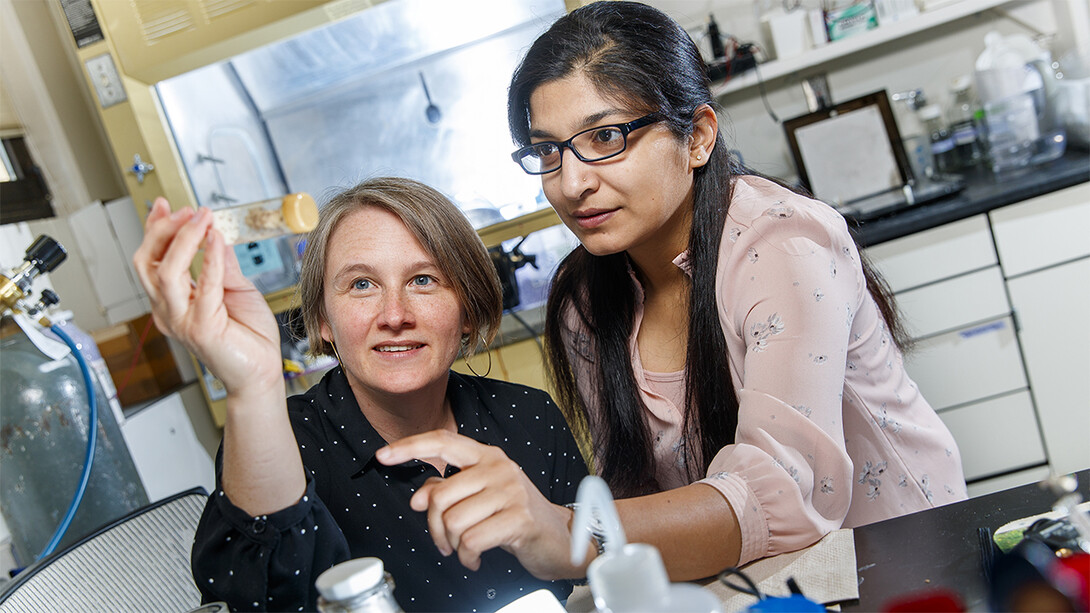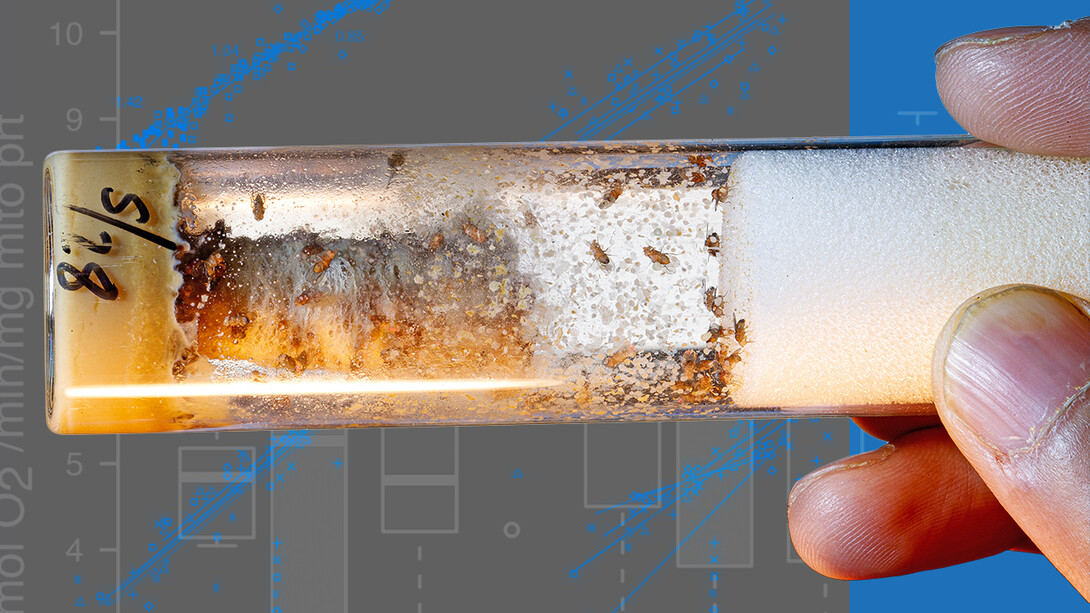
Call it a life lesson in miniature: The fly finds a way.
New research from the University of Nebraska-Lincoln has revealed how fruit fly larvae with a seemingly fatal flaw can survive and advance to adulthood.
As in all multicellular organisms, both the nuclei and mitochondria of fruit fly cells contain distinct DNA. Those two genomes include complementary instruction manuals for collectively building an important conveyor belt in cells — a belt that shuttles electrons to inhaled oxygen and helps generate the cellular energy, ATP, that powers all sorts of life-sustaining tasks.
But a certain genetic mutation effectively spills coffee all over the mitochondrion’s instruction manual, resulting in parts that won’t fit with those produced by the nucleus. That, in turn, keeps the conveyor belt from running at optimal efficiency and makes oxygen-based energy production a slog.
It would also seem to doom the fruit flies carrying the mutation — yet doesn’t.
Nebraska’s Omera Matoo and Kristi Montooth didn’t initially plan to investigate the issue. Instead, they intended to gather data from four genetic strains of fruit flies — three typical, one mutant — as a control group to contrast how larvae develop in the presence of ethanol, a byproduct of the rotting fruit on which they feed.
“Then the control treatment blew out of control,” said Montooth, associate professor of biological sciences.

The researchers saw that the metabolism of the strains shifted in different ways across the three phases of larval development. Some of the second-phase larvae were producing ATP in ways normally seen in the third phase, for instance, and vice versa. Curious, Matoo and Montooth started further comparing the four strains of flies, uncovering more surprises that laid bare how the mutant strain survives even with malfunctioning mitochondria.
The three typical strains adopted the oxygen-based, conveyor-belt ATP production upon entering their later phases of development, as expected. Yet the mutant — despite relying on faulty machinery — actually ramped up its oxygen-based activity to even higher levels, apparently to compensate for its inefficiency.
Though the malfunctioning equipment produced substantial energy, it also led to the buildup of a byproduct, hydrogen peroxide, that can seriously damage cells. In response, the cells eventually allowed more positively charged protons to slip through their mitochondrial membranes — essentially short-circuiting the organelle — to prevent the buildup from turning lethal.
And that wasn’t all. Even as they kicked their oxygen-dependent activity into overdrive, the mutant cells also activated an oxygen-less ATP cycle. This anaerobic approach often represents the last resort of cells without access to oxygen — as in overworked, post-exercise muscles — or a ploy employed by cancer cells.
Matoo likened the dual-ATP strategy to a student who, rather than just furiously cramming or diligently studying, does both in pursuit of a desperately needed A.
“There will be students who can pull an all-nighter, and there can be students who will study three hours a day for four weeks,” said Matoo, a postdoctoral researcher in biological sciences. “These larvae have to complete their development. But because this one strain has a (defect), it uses … pretty much everything. It reads three hours a day, and then it also pulls an all-nighter.
“So it does everything that it can to lead to the same goal, which is very interesting, because it says that there is no one solution to a problem in nature.”
While the any-which-way approach works in the short term, it does seem to take a long-term toll: The mutants are less fertile, and female adults lay about 50% fewer eggs. But the fact that adult mutants otherwise look and behave like typical fruit flies — and that they make it that far at all — speaks to the power of developmental adaptability, Montooth said.
“We tend to think of development as going just one way, and especially in flies, it’s very fast, almost deterministic,” Montooth said. “So I think it will probably surprise some people to see that there is genetic variation for when what seems like a critical switch in metabolism happens.”
Matoo, Montooth and doctoral student Cole Julick reported their findings in the journal GENETICS, which selected the paper as one of its June 2019 Highlights. The researchers received support from the National Science Foundation.







